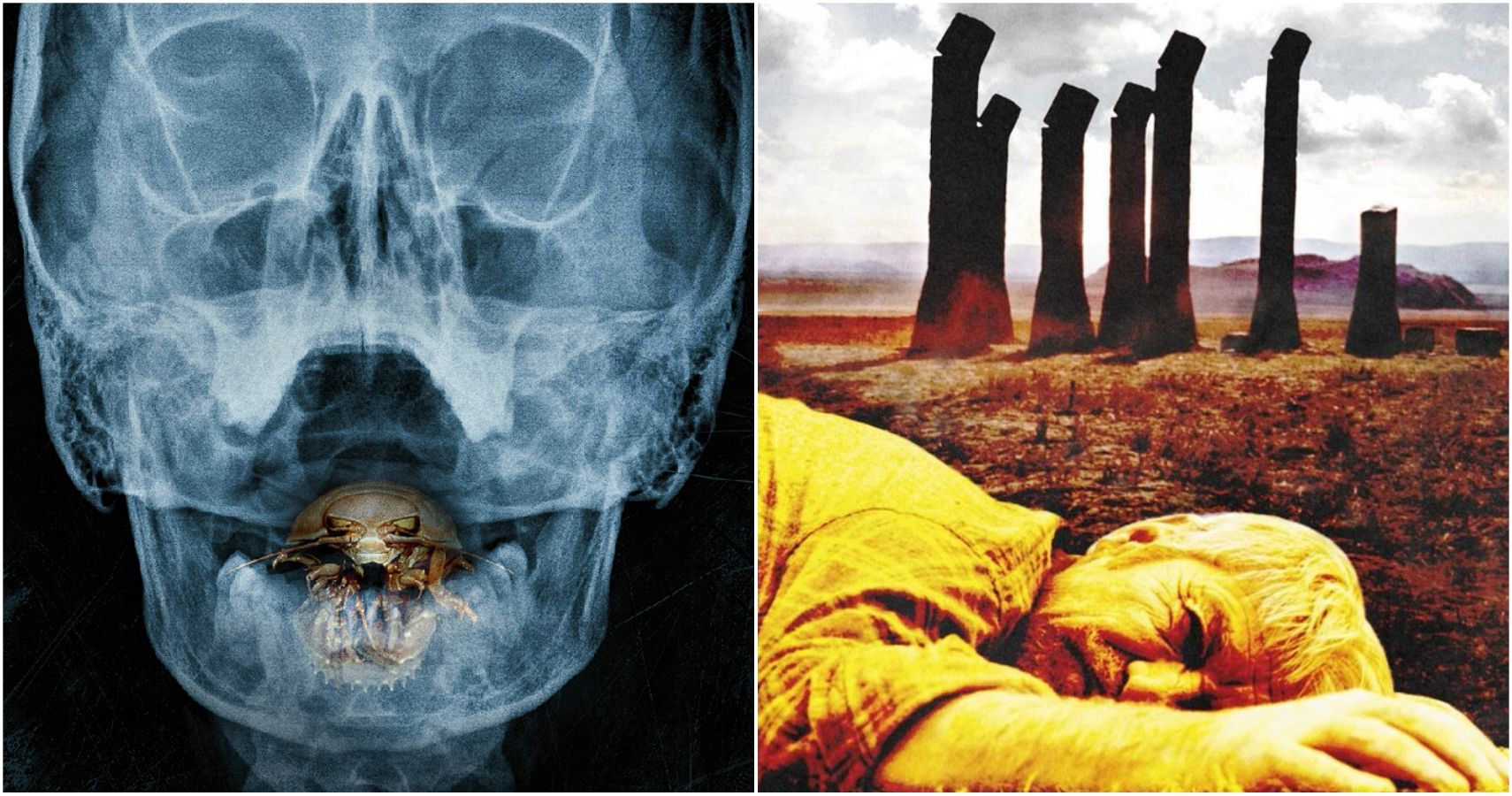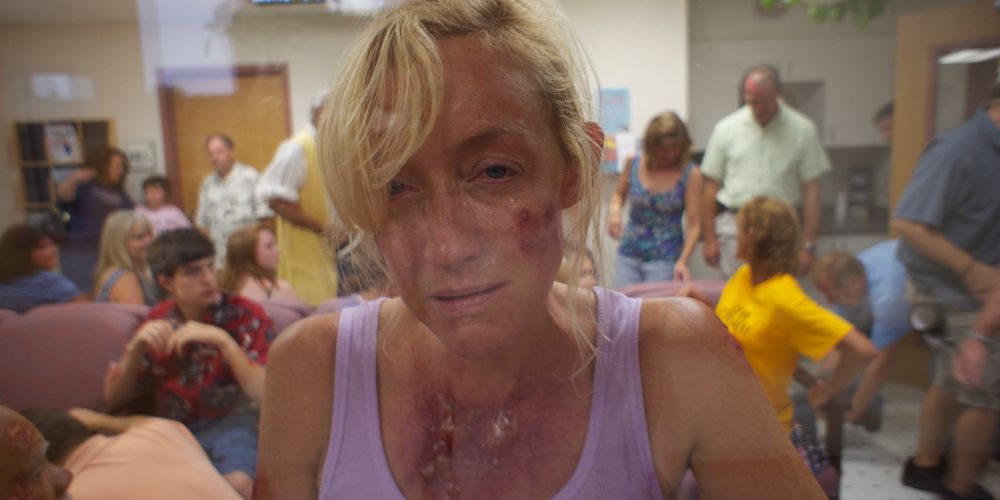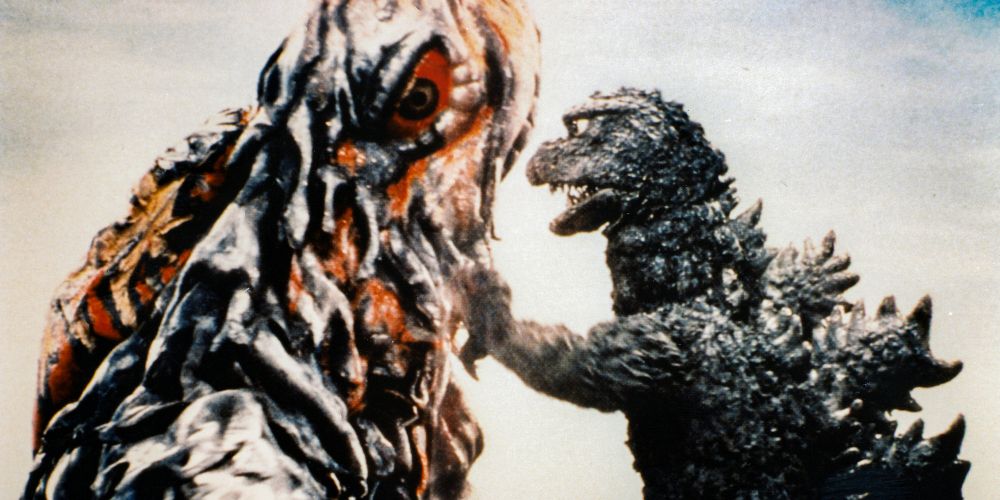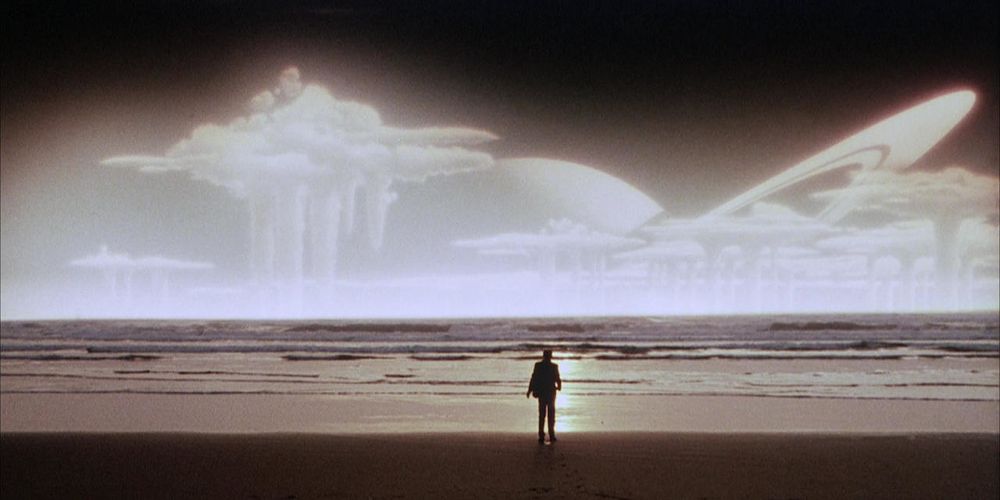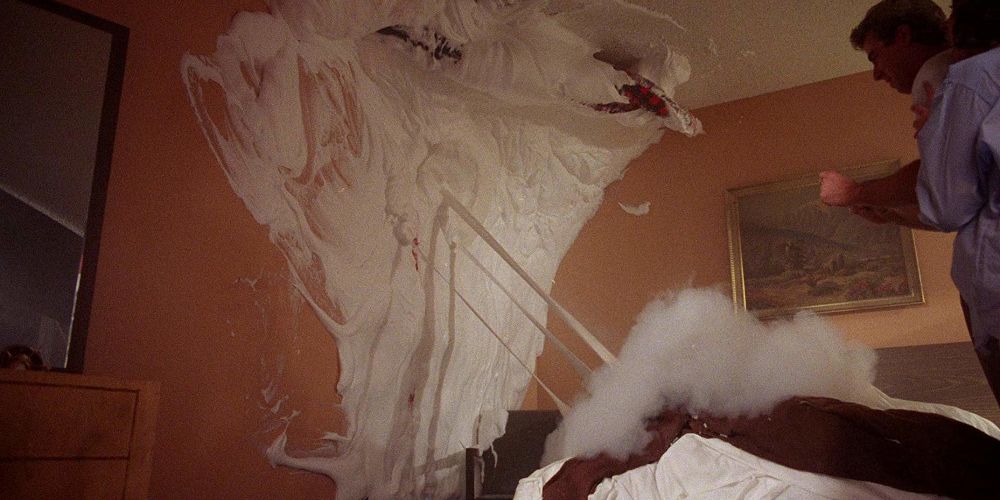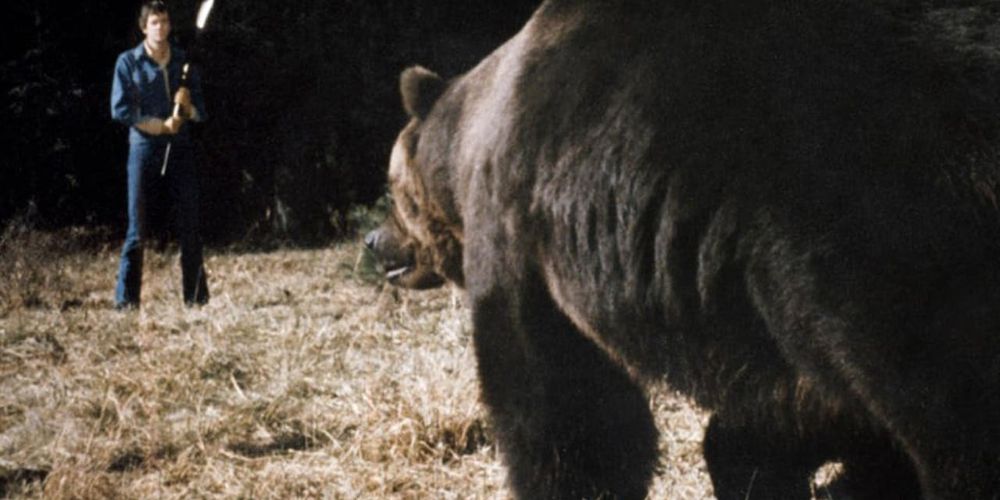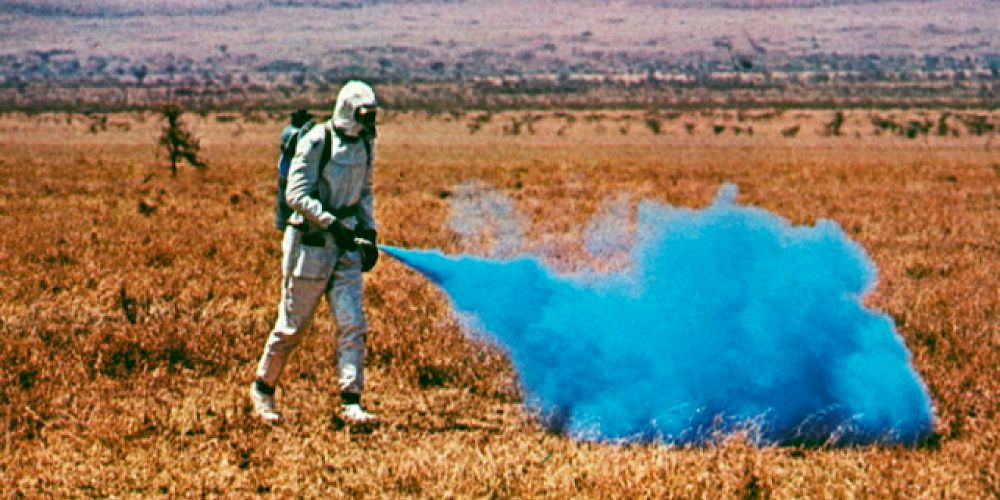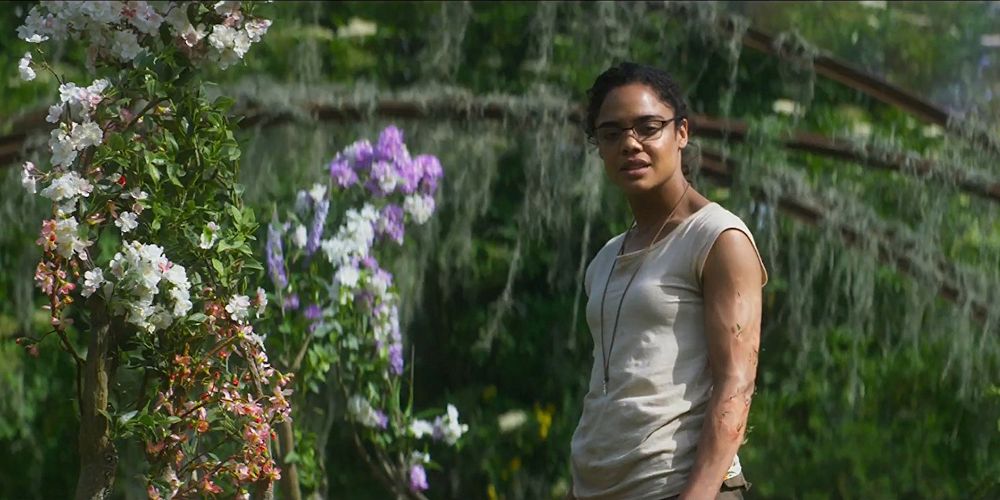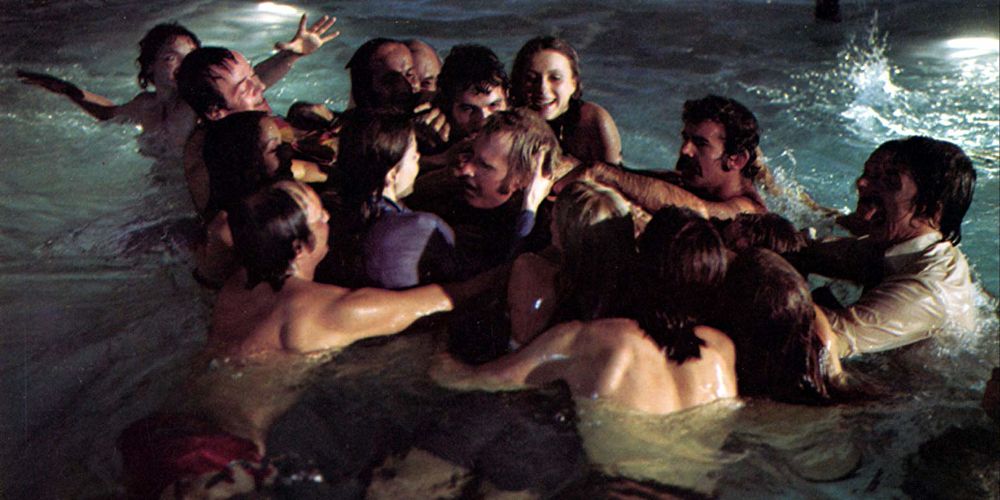Viral Pandemics. Fire-filled tornadoes. Green ooze flowing onto freeways. These are just a few of the environmental catastrophes making headlines in recent weeks and months. It turns out humanity doesn't have to look much further than its own proverbial backyard to find inspiration for horror stories. The compromised and violated environment seeking revenge on the species that has wreaked havoc within it is a common theme in the genre.
The movies on this list use the fear brought on by climate change, pollution, and the aberrant manipulation of the natural world to push their narratives. From monstrous creatures to infestations to extreme body horror, these films employ terrifying special effects and severe situations to prove just how powerless people are when pitted against Mother Nature.
The Bay (2012)
Oscar-winning filmmaker Barry Levinson, known for films like Good Morning, Vietnam and Wag the Dog, was asked to make a documentary about pollution along Maryland's Chesapeake Bay. He abandoned the project once he learned the PBS documentary series Frontline was working on a similar venture.
Instead, Levinson decided to make a found-footage horror film about a fictional parasite that spread like wildfire in a small Maryland town during its July 4th celebration in 2009. The frame story that contextualizes the footage includes a government cover-up and a high death count.
Godzilla Vs. Hedora (1971)
A gripping addition to the Godzilla saga by Yoshimitsu Banno, this film sees the giant green lizard battling a massive, gooey pollution monster. Hedora is a blob of industrial sludge capable of splitting into smaller, acidic monsters. The creature employs every type of pollution imaginable to devastate Japan.
Hedora goes airborne, releases toxic materials, and wipes out dancers at a disco before Godzilla arrives to save the day. While a campy flick, this monster-on-monster gem is rife with ecological terror.
The Host (2006)
Bong Joon-ho, whose latest film Parasite has garnered substantial critical acclaim, is a science fiction and horror maverick whose movies have focused on environmental degradation for quite some time. Before he made the English-language post-apocalyptic feature Snowpiercer, he released a horror film that tackles pollution problems in Seoul, South Korea: The Host.
Due to excess pollution in the River Han, a monstrous mutant starts stalking the city, scooping up residents left and right. When the daughter of the film's protagonist is kidnapped by the beast, he goes on a perilous journey to rescue her.
The Quiet Earth (1985)
The Quiet Earth is a cautionary tale about what happens when experiments with nature take disastrous turns. After toying around with a new power source, one that envelopes the planet in energy, a scientist accidentally wipes out humanity. At first, Zac Hobson wanders around New Zealand, eager to do whatever he wants without consequence.
Soon, Hobson gets lonely, eventually finding a few survivors: a woman he falls in love with and a Maori man, a native New Zealander. The trio band together, hoping to establish a new future for themselves.
Long Weekend (1978)
This Australian film finds a self-absorbed, unruly couple on a camping holiday targeted by the animals and landscapes they meet along their way. After the husband, Peter hits a kangaroo while driving, the long weekend takes a destructive turn.
The couple set up their homestead after driving for hours in what seems like circles. They find themselves along the coast as strange noises and creatures close in on them. Long Weekend ventures into what happens when people abuse the natural world, giving agency and voice to the lifeforms that are usually sacrificed in the wake of human destruction.
The Stuff (1985)
A horror comedy spoof that targets consumer culture and the exploitation of natural resources, The Stuff is both a quintessential 1980s scary movie and a potent social satire. After miners discover a scrumptious white substance, it is quickly transformed into a marketable dessert that competes with the likes of ice cream.
The "Stuff," though, turns out to be a lot more than just a sweet treat. It's a living substance that uses humans as food instead of the other way around.
Grizzly (1976)
A film often described as Jaws in the forest, Grizzly pits man against a 15-foot bear with serious aggression issues. Christopher George plays Mike Kelly, a forest ranger tasked with tracking down the beast killing campers and other rangers.
Mirroring Jaws, Kelly's supervisor wants to cover up the catastrophe, afraid people will not stay in the park. Also like Jaws, Kelly ventures into the deep, dark woods with two other men to finish off the bear. While it has been criticized for being derivative of its predecessor, it was still a hit, one that makes grizzly statements about humanity's place in the food chain.
Phase IV (1974)
Designer Saul Bass, known for his work on Alfred Hitchcock masterpieces like Psycho and Vertigo, is responsible for this film, which turns the creature feature on its head. Both visually stunning and emotionally compelling, Phase IV follows a group of scientists who run into a swarm of mutant ants in the Arizona desert.
These super-intelligent insects cause trouble for the scientists, and instead of employing superficial scares, Bass's movie provides a thought-provoking examination of evolutionary theory and the role humanity plays in the trajectory of other species.
Annihilation (2018)
Based on a book of the same name by Jeff VanderMeer, Annihilation is inspired by the effects of climate change and pollution VanderMeer observed in Florida, where he resides. Alex Garland, known for Ex Machina, adapted the book to the big screen, and the result is equal parts optically dazzling and terrifying.
A group of scientists travels into The Shimmer, a quarantined area where evolution and growth have become unpredictable. It's implied that The Shimmer is the result of human tampering, and the film takes a supernatural turn in order to stress how much people are ruining the world around them.
Shivers (1975)
An early feature from Canadian director David Cronenberg, Shivers is a perfect metaphor for how disease spreads, torturing people through paranoia and isolation long before it attacks.
In the film, residents of a high-rise are soon exposed to a parasite that functions like an STD, turning its victims into sex-crazed maniacs who will not stop until literally everyone on Earth is infected. Cronenberg combines zombie tropes, psychological terror, and scientific meddling flawlessly, utilizing body horror effects to tell his tale.

